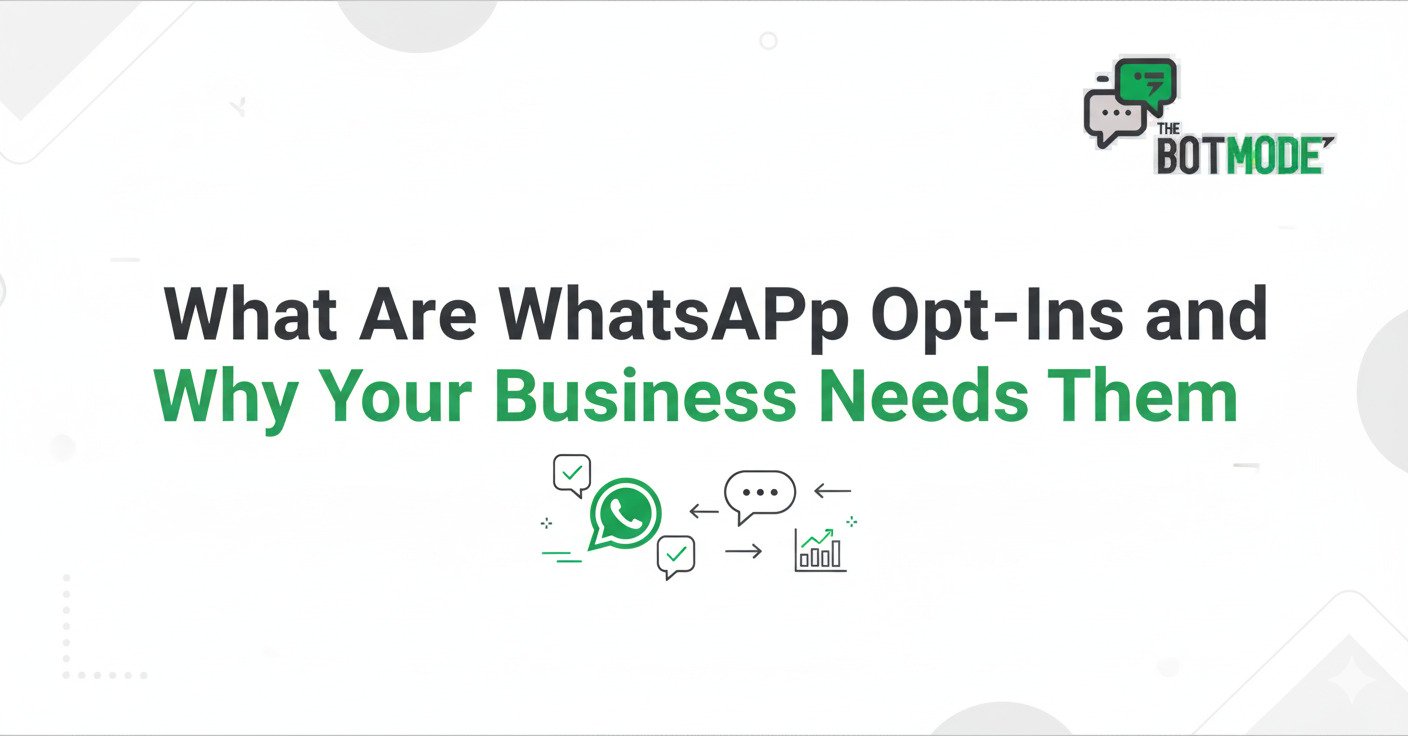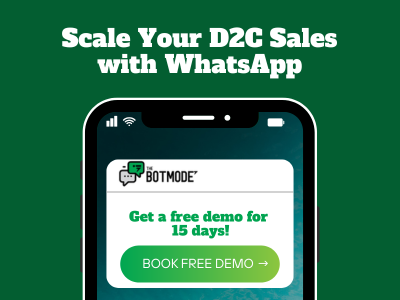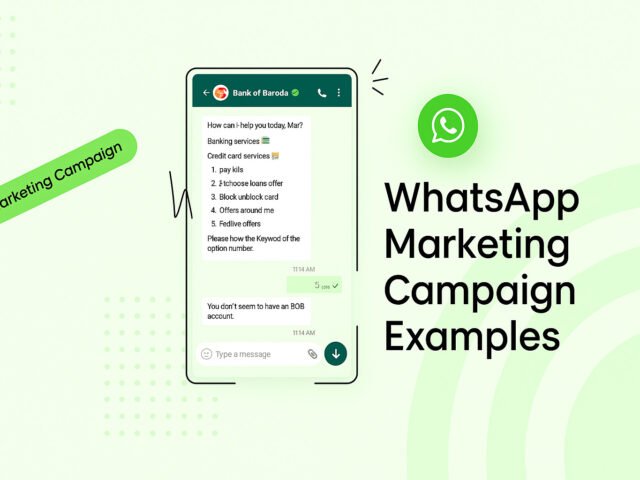A WhatsApp opt-in is explicit permission from a person to receive messages from your business on WhatsApp. Without it, you cannot send business-initiated messages (marketing, utility, authentication). Your opt-in must clearly mention WhatsApp, name your business, set expectations, and offer a simple opt-out. In India, align consent with DPDP principles (freely given, specific, informed, unambiguous, and revocable).
What exactly is a WhatsApp opt-in?
A WhatsApp opt-in is a user’s explicit consent that authorizes you to contact them on WhatsApp outside the 24-hour service window. A valid opt-in should:
- Name WhatsApp as the channel.
- Name your business (e.g., The BotMode).
- Set expectations: what types of messages you’ll send and how often.
- Offer an easy opt-out (e.g., reply STOP/UNSUBSCRIBE).
Why your business needs opt-ins
- Compliance & account health: Protect deliverability and avoid template rejections or messaging restrictions.
- Higher engagement & trust: Opt-in audiences click more, convert better, and block less—improving sender reputation.
- Data quality for automation: Consent-based lists drive smarter journeys (win-backs, replenishment, COD verification).
- Legal readiness in India: Aligns with DPDP requirements and makes audits easier with transparent consent records.
What counts as a valid opt-in?
- Channel transparency: “I agree to receive messages on WhatsApp from The BotMode about [order updates, offers, reminders].”
- Specificity: Clarify message categories—Marketing, Utility, Authentication.
- Audit readiness: Store consent proof (consent text shown, timestamp, source, user agent/IP if web).
- Easy revocation: Honor STOP/UNSUBSCRIBE immediately and propagate to all systems.
High-intent places to collect WhatsApp opt-ins
- Checkout & account pages: “Get order updates and offers on WhatsApp.”
- Lead forms, pop-ups, landing pages: Clear checkbox + link to your privacy notice.
- Support chat or inbound WhatsApp threads: Ask for a “YES” to future messages, then confirm.
- QR codes & in-store signage: “Scan to get updates on WhatsApp.”
- Email/SMS lists: Invite subscribers to opt into WhatsApp with explicit wording.
- IVR & call centers: Capture verbal consent and log it with time and agent details.
India checklist: DPDP-ready consent
- Clear, specific, informed language that explicitly mentions WhatsApp.
- Granular disclosure of message types you’ll send.
- Simple withdrawal (STOP/UNSUBSCRIBE) and universal suppression across journeys.
- Consent ledger: timestamp, source, consent text, and IP/UA (for web) retained for audits.
Template categories & expectation setting
- Marketing: Offers, launches, wishlist/back-in-stock alerts.
- Utility: Order confirmations, shipping updates, reminders.
- Authentication: OTPs, login approvals.
Match your opt-in copy with the categories you actually plan to use.
The BotMode way: compliant opt-ins that convert
- Purpose-built consent UI at checkout, pop-ups, lead forms, and QR flows—explicitly naming WhatsApp and The BotMode.
- Optional double opt-in: Capture consent, then confirm via WhatsApp quick replies (Confirm / Opt-out).
- Unified consent ledger: Timestamp, channel, consent text, IP/UA, and opt-out events—centralized and exportable.
- Policy-aligned templates: Pre-vetted copy mapped to your declared use cases.
- Automated suppression: STOP/UNSUBSCRIBE syncs across campaigns, flows, and segments.
- Smart scheduling: IST-aware quiet hours, frequency caps, and engagement-based throttling.
Copy-paste consent examples
Website checkbox (short):
“I agree to get order updates, reminders, and offers on WhatsApp from TheBotMode. Opt out anytime.”
Popup (value-led):
“Get shipping alerts + exclusive offers on WhatsApp from The BotMode. Reply STOP to unsubscribe.”
WhatsApp confirmation (double opt-in):
“Confirm you’d like to receive order updates and offers from The BotMode on WhatsApp. Reply YES to confirm or STOP to opt out.”
What to store for every opt-in
- phone, name
- consent_text_shown, consent_types (marketing/utility/authentication)
- source (checkout | popup | QR | WhatsApp thread | call center)
- timestamp, timezone, locale
- ip, user_agent (web)
- proof_ref (screenshot or form/version ID)
- opt_out_timestamp (if any)
FAQs
1) Can I message someone first without opt-in?
No. You need opt-in for business-initiated messages. You can reply within 24 hours of a user’s inbound message for service conversations.
2) Does a user saying “Hi” count as opt-in?
No. It only opens a 24-hour service window for support; future business-initiated messages still require opt-in.
3) What should my opt-out flow look like?
Accept STOP/UNSUBSCRIBE in WhatsApp and propagate the suppression to all tools, segments, and data stores.
4) What’s specific to India?
Follow DPDP principles: ensure consent is freely given, specific, informed, unambiguous, and easy to withdraw.


















